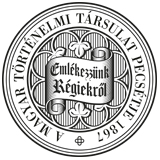Századok – 2008
TANULMÁNYOK - Sebestyén Elemér - Szabó Péter: Magyar katonai közigazgatás Észak-Erdélyben és a Székelyföldön 1940 őszén VI/1383
zett ki élükre, s intézkedett, hogy a tulajdon-átruházás feltételeit az általa kinevezendő döntő bizottság állapítsa meg. Ezen intézkedései végül is nem okoztak jóvátehetetlen károkat, mivel a fővezérségi kormánymegbízottnak sikerült azokat időben visszavonatniuk.14 3 Rajnay tábornok távozásakor az Erdélyi Néplap november 26-i számában A szegények tábornoka címmel méltató cikk jelent meg, melyben az alábbiakat idézték Nagyvárad katonai közigazgatási parancsnokától: „Intézkedéseim lehetséges, hogy visszatetszést váltottak ki egyesekben. Engem csak a jó szándék vezetett. Kezemhez semmi nem tapadt [...] Kétségtelen, hogy a jóvátétellel kapcsolatban súlyos intézkedésekre volt szükség, mert megfordulva a perifériák lakosai között, megláttam az igazán elesett magyarokat. Különös lehetett egyesek előtt, hogy összehívattam a munkaadókat az emberségesebb munkabérek megállapítása végett. Erre az adott okot, mert hallottam, milyen lehetetlen bérek mellett használják ki az embereket."14 4 HUNGARIAN MILITARY ADMINISTRATION IN NORTHERN TRANSYLVANIA AND SZÉKELYFÖLD IN THE AUTUMN OF 1940 by Elemér Sebestyén - Péter Szabó (Summary) In the Northern Transylvanian territories which had been reattached to Hungary by the second arbitration of Vienna military administration was introduced on 12 September 1940. This transitory administrative organisation faced difficult and even unsurmountable tasks, as it had to reanimate a region which had been paralysed economically, plundered by the withdrawing Romanian army, deprived of food and raw materials, and invaded by Hungarian refugees from Southern Transylvania. It had to provide for all the administrative necessities, namely the organisation of the basic level of administration (town and village municipalities), of discharging police duties, maintainig the continuity of economic life, provisioning, supplying food for the Székelyföld in winter, organising public education, handling social problems and those of the refugees. Right from the outset it met with problems for the handling of which its predominantly Hungarian personnel lacked the necessary experience, despite their willingness to help as quickly as possible. Moreover, the meaures taken frequently resulted in further problems. Its activity was further hindered by the conflicts between the Hungarian political and military leadership, which sometimes lead to mutual accusations. The main merit of the military administration, which subsisted for three months, was the solution of the serious alimentary crisis of the local population, the speeding up of agricultural production and the reorganisation and direction of traffic. It maintained many Northern Transylvanian factories, whose production fell and lost markets, by offering credit and supplying raw materials. Its measures aimed at raising the poor, provisioning and caring for the refugees, and establishing acceptable salaries also deserve praise. Its police regulations were also predominantly justified as far as they were directed against people trying to profit from the disturbances and those conspiring against the new authorities. The behaviour of the chief officers was double-faced. On the one hand, led by undeniable philantropy, they acknowledged it as their duty to support the poorer layers of Hungarian society and offer them jobs. On the other hand, they sometimes forgot about the merely temporary nature of their measures and, with reference to their own responsibility, refused to ask for help in the making of decisions. Moreover, towards the national minorities they were rather intolerant, and sometimes made decisions which encroached upon the private law, which resulted in similar steps against the Hungarian minority by the Romanian authorities. 143 Papp József jelentése Telekinek (1940. december 17.). MOL, K 53, 1. dob, I. tétel, 561/1940. sz. 144 Erdélyi Néplap, 1940. november 26. 1.
